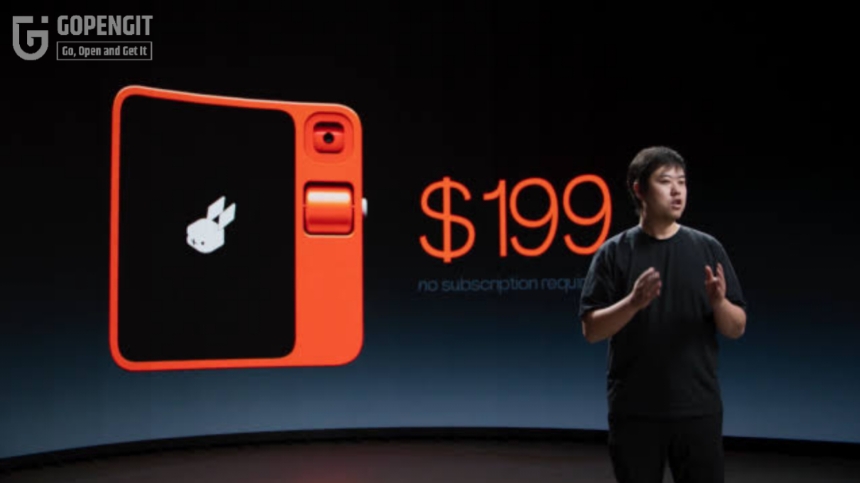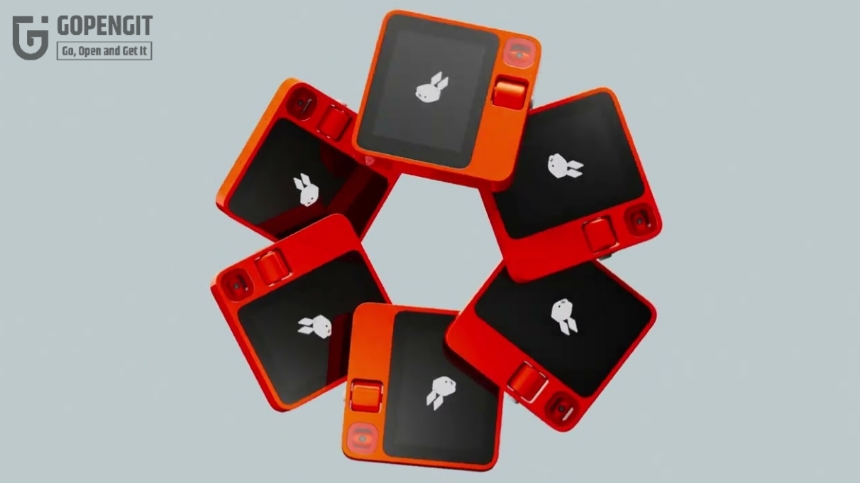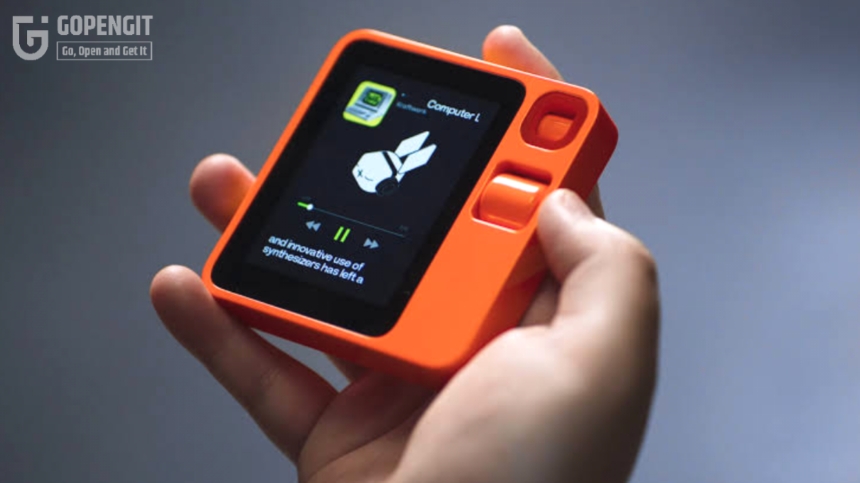Rabbit R1 : The CEO and creator of Rabbit, an AI firm, Jesse Lyu, sees a day when the $199 standalone AI gadget his business makes, the Rabbit R1, will likely take the place of smartphones. Even with this audacious goal, Lyu admits that the change won’t occur overnight.
Magnificent Hardware Style

The Rabbit R1 has a 2.88-inch touchscreen, a revolving camera, and a tactile scroll wheel. It looks like a redesigned Playdate console or a portable TV from the 1990s. The gadget, created in partnership with Teenage Engineering, has a 2.3GHz MediaTek CPU, 4GB of RAM, and 128GB of storage. It is surprisingly light and has a gratifyingly haptic feel.
Rabbit OS: The Rabbit R1‘s Core
The underlying AI technology and Rabbit OS, the operating system, are where the real innovation is found. Rabbit OS is based on a “Large Action Model” (LAM), which serves as a general controller for a variety of applications, in contrast to ChatGPT-like models. Lyu likens it to Google Assistant or Alexa, offering a unified interface for messaging, music, rides, shopping, and other purposes.
Read More : Exploring the Apple Vision Pro: Unveiling All Details as it Hits the Shelves in February.
Learning-Based App Integration

By training its model to interact with pre-existing applications, Rabbit avoided the need for developers to modify their programs. As a consequence, using the Rabbit R1‘s UI to see category-based cards for various tasks is a smooth experience. Since people engage with applications like Spotify and Uber during the model’s training, it can be used to any app.
Training Mode: AI That Users Can Teach
With the Rabbit R1‘s specialized training mode, users may instruct the gadget to do certain activities. Users may teach the device, for example, on Photoshop operations, and Rabbit OS says that after a short 30-second processing time, the gadget can repeat these activities on its own.
Ingenious Method for App Assistance

Rabbit’s method deftly avoids the problem of persuading programmers to support a novel operating system. Rabbit OS teaches the model directly, rather than aiming for app integration, resulting in a more flexible and intuitive experience.
Uncertain Vision
Though the Rabbit R1 has several great characteristics, it’s yet unclear what Rabbit intends to do with it. It’s not meant to completely replace smartphones, but it can do a lot of things, including support a SIM card and make video conversations. There are concerns over the device’s genuine function since it blurs the distinction between an all-in-one solution and a voice assistant.
Accessibility and Upcoming Opportunities
Preorders for the Rabbit R1 are already being accepted, and delivery is scheduled to start in March. Jesse Lyu is still upbeat about the gadget’s prospects and hopes it will reach the market before rivals like Humane’s AI Pin. Without a doubt, Rabbit R1 is a notable contribution to the rapidly changing field of AI-powered gadgets.





